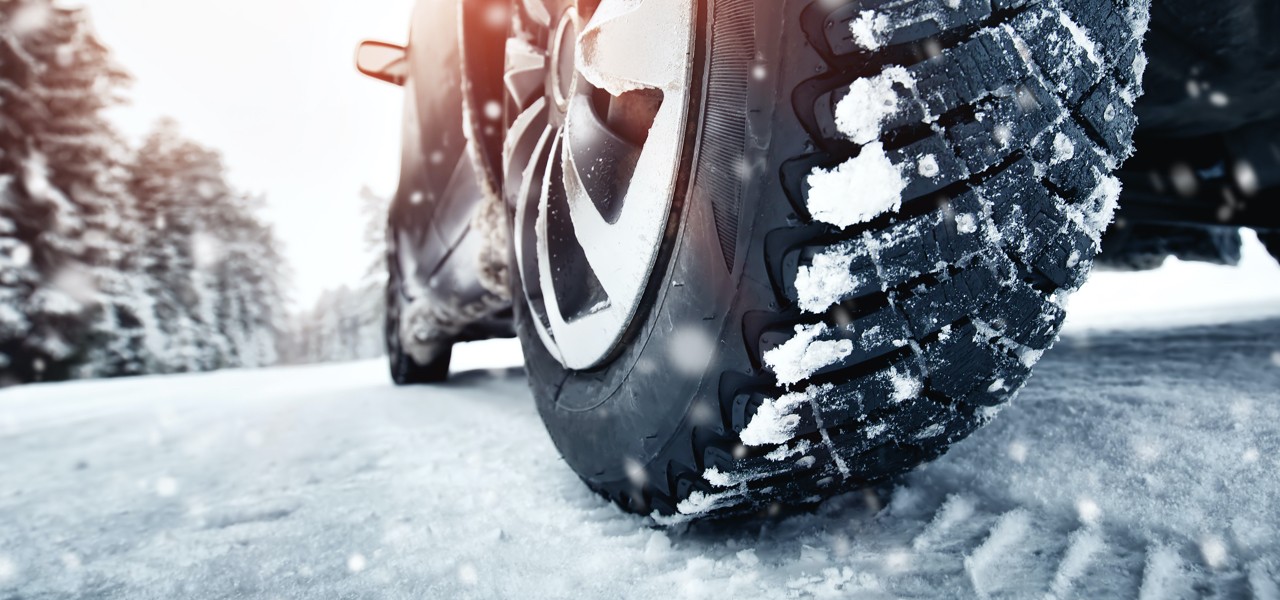
Shocks 101
Winter vs. Your Shocks & Struts
Forecast: Slick Roads

From snow and ice to freezing rain and sleet, winter makes driving your vehicle a challenge. Add in the potholes that develop from the freeze-thaw cycle that occurs during the winter season and you need your vehicle to be operating in top condition to handle these harsh conditions.
Your shocks and struts, and tires and brakes all work together to provide the proper steering, stopping and stability you need when dealing with the effects of winter weather on the roads. If any of these components aren’t working properly, that trip to the store can become a white-knuckle ride. Before winter weather gets its icy grip on many parts of the country, discover what you can do to ensure that you aren’t slip-sliding all over the road.
Inspect Shocks and Struts

Shocks and struts are vital to ensuring that your vehicle can safely handle the potholes and snow-packed roads that winter brings. Your shocks and struts influence the overall comfort, safety, handling and durability of your vehicle. Properly working shocks and struts improve control and handling by helping maintain wheel alignment and reduce abrupt shifts in vehicle weight over all four tires to improve control during turns, braking and acceleration.
There are some things you can check when doing your own high-level inspection of shocks and struts.
- Take note of the ride quality. Does the ride feel rougher than it did a few months ago? Since the decline of shocks and struts is gradual it is easy to overlook subtle changes.
- Is it difficult to maintain control of your vehicle at highway speeds during windy conditions or when loaded?
- Have you hit a pothole or other debris particularly hard?
- Does your vehicle bounce or float excessively?
- Does it feel like your vehicle dives, squats, rolls or sways rapidly during steering or handling maneuvers?
If you notice any problems with ride quality or performance, have your shocks and struts inspected by a service professional to ensure that your vehicle delivers the steering, stopping and stability that you need all winter long. If your shocks and struts are worn, the overall ride of your vehicle will lack precision and performance, and replacing worn shocks and struts can give any vehicle a like-new ride.
Examine Tires

Winter can bring snow, ice, sleet and freezing rain, all of which can make driving a challenge. Providing traction and grip, your tires work with your shocks and struts to help you maintain control of your vehicle. Properly working shocks and struts reduce premature tire wear by maximizing tire-to-road contact, improving vehicle stability and minimizing weight transfer.
Be sure your tires are ready for whatever the day may bring; inspect and measure the tread depth, and if the wear bars are showing, replace your tires. Make sure to examine your tires periodically for signs of uneven wear or cupping, which is a sign of worn or damaged shocks and struts. If you notice any cupping, have your service professional check your shocks and struts.
Finally, keep your tires inflated to the manufacturer’s recommended pressure; when the temperature drops, so does tire pressure. Check your owner’s manual to determine the proper tire pressure for your vehicle.
Check Brakes
You count on your brakes to work every time you approach a stop sign or traffic light – throw in the snow and ice of winter and properly working brakes are even more important. Don’t ignore your brake pads, as the consequences could be costly.
Keep an eye on your brakes by monitoring the wear indicator that comes on most brake pads. The metal tab will come closer and closer to the brake rotor as the pad wears down. When the tab hits the rotor, it will make a screeching sound to indicate that it’s time to get the pads replaced.
Periodically, roll down the windows and listen to your brakes. Listen for squeaking or squealing and grinding or growling noises. If you hear anything out of the ordinary, make an appointment with your service professional.
Learn more about quality shocks, struts, and strut assemblies, find the right car part, or find a local repair shop today.
The content in this article is for informational purposes only. You should consult with a certified technician or mechanic if you have questions relating to any of the topics covered herein. Tenneco will not be liable for any loss or damage caused by your reliance on any content.